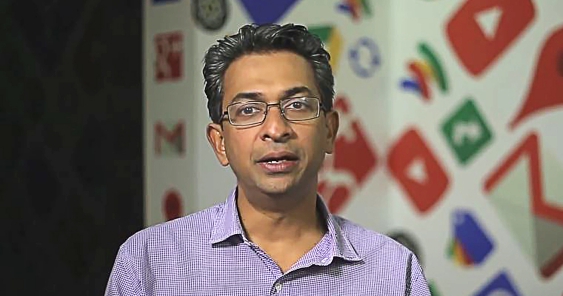With close to half of the population already online, Google unveils its ambitious plan to get everyone in the Philippines on board.
MANILA – Rajan Anandan is wasting no time. Just five months into his expanded role as Google’s managing director for Southeast Asia, he flew into Manila to announce a very ambitious mission – to get every single Filipino on the internet.
Anandan is convinced that it can do so much more than just entertaining people or as a means of faster communication. “Once you get on the internet, you get access to information, access to things you didn’t have before whether in terms of education, healthcare services or commerce. And over time, that really transforms lives.”
It’s a daunting task to get 100 million people online. In fact, no country in the world has achieved 100% internet penetration to date.
But current figures about the Philippine’s progress in the digital space are all in favor to have this realized sooner than later. Already, 47% of the Philippine population is on the internet, based on Google data. And by year-end, it’s projected that over half (57%) of the country will be online and will continue to grow.
Where to begin? The first step is literally already in the hands of close to a quarter of the populace, says Anandan. To date, 55% out of the 45 million internet users in the country are actually on smartphones, with 9 out of 10 phones running on Google Android OS.
“The Philippines becoming online is essentially mobile-only. This means that every new internet user in the Philippines is accessing the internet for the first time on a mobile device,” he explains.
The key to increase ownership is to make devices more affordable, says Anandan, and Google responded to this last September with Android One in India, which he spearheaded when he was still Google India’s managing director.
Android One is not exactly a cheap phone but hardware design guidelines created by Google engineers that device makers can follow to make low-cost phones faster. It was later launched in the Philippines in February, with a fairly good specced phone priced at below PhP5,000 (US$100).
“It has done exceptionally well. As you know, we don’t give exact figures but I can tell you that it’s selling out. Actually, we are currently constrained on supply than on demand,” says Anandan.
Part of Google’s daunting mission is to also bring every single piece of content online, whether if it’s in the library, museum or on the road. Google Philippines has started working on this as early as January 2014 by launching Google Street View in partnership with the Department of Tourism, which allows anyone to virtually walk around panoramic photos of the Philippines through Google Maps.
Video still remains as the most-sought after form of content here and elsewhere, but hefty data costs in emerging markets like the Philippines have hampered accessibility. Google also responded to this last November by enabling offline viewing on YouTube globally, letting users view downloaded video on their mobile devices at their leisure.
It’s a move that can only pull in more users. Already, 40% of watch time in YouTube is on mobile. “Unlike many emerging markets, the Philippine is constrained on affordability and bandwidth. But despite those challenges, YouTube is exploding on mobile. I think that shows the power of online video.”
Affordability is also crucial here so Google partnered with Smart Communications just last May to launch the world’s first video data plan in the country that’s up to 90% cheaper than anything on the market. With just PhP5 (11 US cents), users can get 65 megabytes (MB) of data – or almost 15 minutes of video.
“So by the end of the year you’ll have 57 million by the end of 2016 and 65 million to 70 million Filipinos on the internet. All of a sudden, you’re building user behavior that will make the internet explode,” adds Anandan.
The last of Google’s three-pronged strategy is getting businesses on board, specifically small and medium sized enterprises (SMEs). Anandan shares a McKinsey study that found that an SME online compared to an SME that isn’t grows 50% faster.
There are 1 million SMEs in the Philippines, but only a mere 1% or around 10,000 have a website. Also, only close to150,000 have any kind of web presence, whether it’s a Facebook page of their address on a digital map somewhere.
In addition to getting 100 million Filipinos online, Google also set another equally ambitious goal of getting half of all Filipino SME’s to have a web presence by 2017. To get there, Google will be launching Google My Business this year, a service that allows businesses to build a basic website for free.
Details are under wraps but Ken Lingan, Google Philippines country manager, said that they are exploring a partnership with the Department of Trade and Industry (DTI) to tap Go Negosyo centers to teach SMEs how to go online.
Anandan projects that up to 80 million Filipinos will be on the internet by 2017 to make country the 6th largest online market, motivating Google and everyone else to strike while the iron’s hot.
“You don’t get to 100% penetration without a lot of hard work, a lot of smarts. Admiring just the Philippine’s potential won’t get you there.”
“Until we get the entire country on the internet, our mission isn’t done,” he promised.








